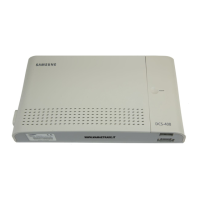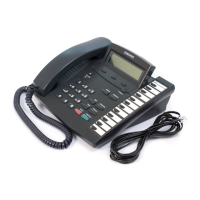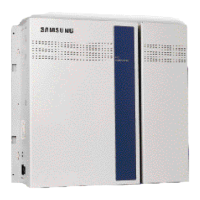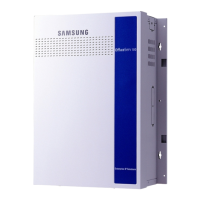SAMSUNG Programming
DCS-816 February, 1999
2-9
VOICE MAIL/AUTO ATTENDANT
INTEGRATION
This section focuses mainly on in–band integration.
Because of the increased popularity of voice mail and auto attendant use, DCS-
816 includes many programmable options to address this demand. The degree
of integration that can be achieved depends on the abilities of the voice mail/auto
attendant (VM/AA) system as well as the telephone system.
This list details the capabilities provided by the DCS-816 for voice mail via in–
band integration.
Hardware Provisions
• The VM/AA system must be connected to single line circuits on
any SLI port.
• Each port is equipped with a dedicated DTMF receiver for
detecting DTMF signalling from the VM/AA.
• These ports also provide an instant break in loop current when
the calling party hangs up. This is called a disconnect signal.
Software Provisions
• SCREENED OR UNSCREENED TRANSFER
There are no special codes needed to transfer a call. Simply
hookflash, receive transfer dial tone and dial the destination.
• DIRECT IN LINES
Any C.O. call can be assigned to ring at an individual station or a
station hunt group assigned to the VM/AA.
• CALLS OR RECALLS TO THE OPERATOR
Dialling 0 will always result in a ringback signal. If the operator is
busy, the call continues to ring in queue to the operator. This
prevents a caller from dialling 0 and reaching another mailbox
because the operator is busy.
• MESSAGE WAITING
A VM/AA port can leave a message at any station or group of
stations. The message waiting indication can be set or cancelled
at any station or station group with or without the stations ringing.
• IN–BAND SIGNALLING
DCS-816 can be programmed to send the calling station’ s
extension number after the voice mail system answers. These
DTMF signals may include a leading digit to indicate the type of
call and additional information about the original caller. DTMF

